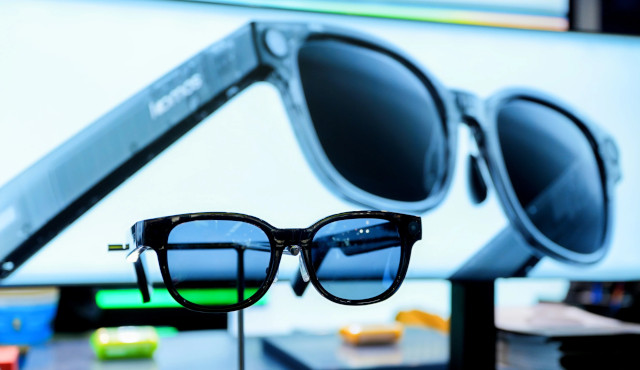At MWC 2025, Huawei points towards networks to bring Mobile AI future alive
By Mike Joubert 4 March 2025 | Categories: news
Mobile World Congress 2025 kicked off yesterday in Barcelona, Spain, and while last year’s event covered the rise of AI, this year seems to be more about the nitty-gritty. For Huawei this meant considering the 5G and upgraded 5G Advanced (5G-A) networks that need to be in place to make all the vast promises of AI possible.
In a keynote delivered by Li Peng, Huawei's corporate senior VP and President of ICT Sales & Service, he noted how AI is evolving human-machine interaction. Not only is human-machine interaction evolving from simple text-based communications to now more voice, gesture and video-based interactions, but Peng also pointed towards 2030, where it is predicted that there will be six billion mobile AI agents, AI social robots in 50 million homes, and 1000 robot workers for every 10 000 workers in manufacturing.
He notes how these mobile AI devices require a robust network to work efficiently, with far better latency required.
This was demonstrated earlier the day by two AI-based ventures out of China – Zhipu AI and Sharge AI glasses. Carol Lin, VP of Zhipu AI, explained how their Large-Language Model has evolved over time, now calling Agentic LLMs the next paradigm in GenAI, there to perform intricate tasks on behalf of humans, but without the help of humans.
She demonstrated this agentic aspect by showing how Zhipu on a smartphone or notebook can conduct a number of intricate operations, such as searching for the most relevant trip itineraries on Reddit and summarising it, reserving seats for nearby restaurants and booking specific trips.
William Zhang, CEO of Sharge, believes his company’s AI Glasses offers real-time information, navigation, and translation of what the wearer is seeing, bringing AI functionality to users through Loomos OS, the world’s first “AI Memory System”.

For both these products, users’ upload speed is as important as the download speed, with good latency also required. However, as Mark Giles, industry analyst at Ookla (the company responsible for Speedtest) pointed out, upload speeds have actually declined in key markets over the past few years. And while latency performance is doing well on 5G SA (stand-alone) networks, 5G SA lags in many markets.
Taking into account the growth of Mobile AI applications, with the two examples above part of many more being showcased at MWC 2025, Peng stated cellular networks need to evolve, from 5G NSA (non-standalone), to 5G SA and eventually 5G-A.
Huawei launched 5G-A commercially last year, with 5G-A basically being a more capable and robust network, better able to support Mobile AI applications. Peng notes how 5G-A also creates new opportunities for the network providers, with Chinese carriers, for example, working with more than 100 industries, including insurance and catering companies, to provide multi-modal AI New Calling services through open APIs.
And for carriers, there are more to be had, with 5G-A creating more possible business cases to work with, ensuring, for example, multi-view live streaming for sport fans, HD online meeting from anywhere, or dynamically optimised networks to ensure travellers do not experience laggy hotspots.
"New network capabilities will give rise to new business models," Peng said. "Carriers can go beyond monetising traffic and start monetising experience itself." To this end, Huawei announced new products, including the world's first AI Core Network and AI ready data storage.
Walking the halls of MWC 2025, it’s clear that all the AI applications showcased will put more stress on networks. Indeed, robust and fast cellular networks, such as 5G-A, will be one of the key requirements for all the glitzy AI promises at MWC 2025. At least for now, until 6G starts rolling out toward the end of the decade.
MWC 2025 is continuing during the week, from where TechSmart is covering the event. Stay tuned for more articles, and follow us on Twitter for live updates.
Most Read Articles

Have Your Say
What new tech or developments are you most anticipating this year?



